Harnessing Technology in Music: A Detailed Guide
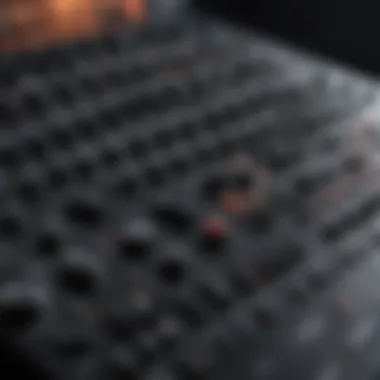
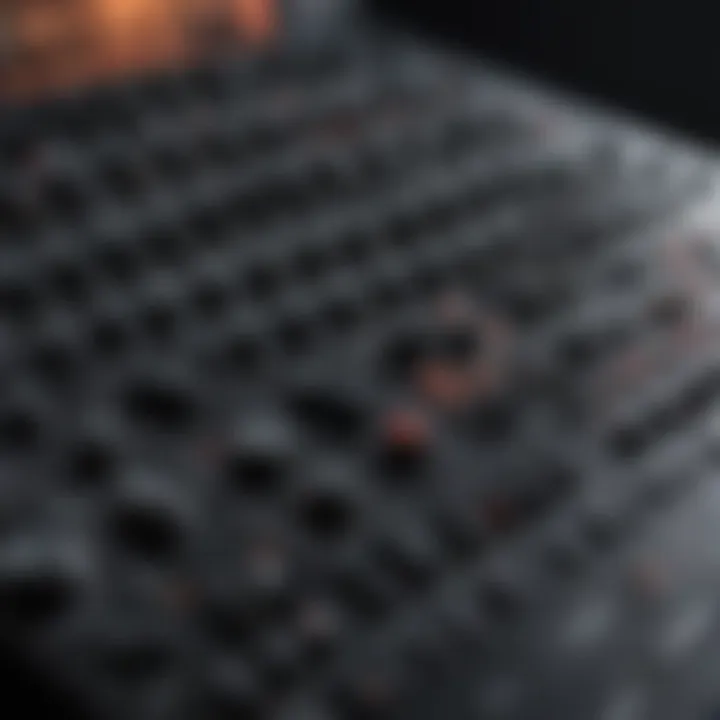
Intro
As technology seeps into every corner of our lives, the music landscape is changing rapidly, sometimes in ways we never saw coming. From the dawn of cassette tapes to the era of streaming, the tools we use to create and appreciate music have evolved tremendously. With this shift, music enthusiasts, both novice and seasoned, must adapt to new technological advancements that redefine their craft and experience.
In this piece, we will cover the technological tools that have become essential in the realms of creation, production, and consumption, providing a comprehensive understanding of how these innovations work and why they matter.
We will explore various aspects, such as software applications that simplify the creative process, hardware instruments that bridge the gap between analog and digital, and emerging technologies that foreshadow what the future holds. This is not just for musicians looking to record their first track; it's also aimed at music lovers who appreciate the intricate layers involved in their listening experience.
Through a closer inspection of the capabilities and sheer advantages these techno tools offer, we seek to foster a deeper connection between the audience and the art form itself. The discussion will lead us into practical applications, enhancing creativity while making music more accessible to everyone. So, whether you're a budding artist looking to make your mark, a student of music aiming to expand your skillset, or simply someone who can't help but tap their feet to a good beat, there's plenty to glean here.
Let’s move forward together and dive into the artist profile, where we can understand better who drives the music we love and how they utilize these techno tools in their craft.
Artist Profile
In the context of the evolving music scene, understanding the artist's journeys become paramount. It sets the stage for appreciating their use of technology.
Biography and Background
Many artists today harness these techno tools, blending traditional and modern influences. Each artist’s journey is marked by unique experiences, revealing their path from basement studios to global stages. For example, consider an artist like Grimes, whose eclectic mix of genres showcases her DIY approach to production. Starting from a modest background, she employed software like Ableton Live to produce her tracks, proving that innovation often comes from necessity.
Major Influences and Inspirations
An artist's influences shape their music, but it’s the tools they choose that refine their sound. Grimes, drawing from a tapestry of inspirations including pop, electronic, and experimental sounds, also credits technology as a driving force behind her creativity. Similarly, in the studio, she’s known to experiment with different hardware synthesizers that add depth and texture to her records, often creating a sound that feels both intensely personal and globally resonant.
Understanding how these influences blend with the technology at their fingertips reveals a much richer narrative and provides insight into the creation of their music—and by extension, their signature sound as a whole.
Preamble to Techno Tools
In the ever-evolving world of music, techno tools serve as the backbone of creativity and innovation. Musicians, producers, and sound designers leverage technology to push the boundaries of sound, making it essential to understand what these tools entail. By exploring the nuances of techno tools, we can open a door to countless possibilities in music-making, which reflects the contemporary landscape shaped by tech advancements.
Techno tools can be defined broadly, encompassing both software and hardware designed for music creation, production, and distribution. Their relevance lies in the way they facilitate a smoother workflow, enabling artists to experiment, collaborate, and refine their craft. Having a firm grasp on these tools can transform an amateur into a proficient creator, allowing one to harness technology for artistic expression.
We live in a time where the music industry is not just about creativity but also about accessibility. With techno tools, the barrier to entry has significantly lowered; anyone with a passion for music can step into the scene. It’s no longer just the talented few with a recording studio access who get to express themselves. Instead, a laptop and a few applications can be enough to kickstart a musical journey.
"The incredible part of music today is that creativity is at everyone’s fingertips. Tech tools enable us to share our art with the world anytime, anywhere."
The benefits of these tools are vast. First, they enhance creativity by providing a treasure trove of sounds and editing capabilities. Second, they foster collaboration by allowing musicians from around the globe to work together, transcending geographical constraints. Third, they streamline production processes, making it easier to move from composition to distribution. Understanding these aspects not only helps in utilizing the tools effectively but also in appreciating the art form’s evolution in a technological context.
In the subsequent sections, we will delve deeper into specific techno tools, their evolution, and the myriad ways they impact music creation and production. This exploration will guide music enthusiasts in navigating the tools available today, equipping them with insights that can shape their musical endeavors.
Defining Techno Tools
To clearly understand what we mean by techno tools, we must break them down. Techno tools encompass a wide range of devices and software, including but not limited to:
- Digital Audio Workstations (DAWs): These applications serve as the primary interface for creating music. They handle the mixing, editing, and arrangement of audio tracks.
- Synthesizers: Hardware or software instruments that generate sound through various methods. They are central in shaping the much-loved soundscapes of electronic music.
- Plugins: Software that adds effects or instruments to a DAW, allowing for complex sound design and manipulation.
- Mobile Apps: With the rise of smartphones, applications designed for music creation are becoming increasingly popular, making the process accessible to a broader audience.
- Collaboration Platforms: Tools that facilitate remote musicians to create together across vast distances.
These examples illustrate the diversity found within the realm of techno tools. By defining these elements, we lay the groundwork for understanding their roles in music creation.
The Evolution of Technology in Music
The relationship between technology and music is one steeped in history. From the mechanical innovations in the early 20th century to today’s digital breakthroughs, technology's penetration into music has been profound.
Initially, musicians relied heavily on physical instruments, with limited means to capture their sounds. The introduction of tape recorders changed the game, allowing for recordings that could be altered and edited—something truly revolutionary at the time. Fast forward to the advent of personal computers and digital synthesizers, and the landscape began to shift dramatically.
In the 1990s, the introduction of MIDI technology set the stage for modern music production, enabling a new way for instruments to communicate digitally. Today, software applications have simplified the recording process to such an extent that individuals can produce high-quality music from their bedrooms.
The music landscape now embraces myriad genres and styles thanks to these technological advancements. Without the evolution of these tools, the rich tapestry of sounds and styles we experience today would be gravely diminished. Artists now have access to an unprecedented range of sounds, from synthesized beats to digital orchestras, expanding their sonic palette dramatically.
Understanding this evolution is crucial for those diving into music. By acknowledging where we’ve come from, musicians can better appreciate the tools they have at their disposal.
As we navigate further into the intricacies of techno tools, it becomes evident that the fusion of technology and creativity continues to reshape music production.
Types of Techno Tools
In the rapidly evolving world of music, the spectrum of techno tools available has vastly expanded. These tools are not just gadgets; they are lifelines for creativity and productivity. Understanding the types of techno tools empowers musicians and enthusiasts alike to harness their full potential and turn their visions into reality.
Software Applications
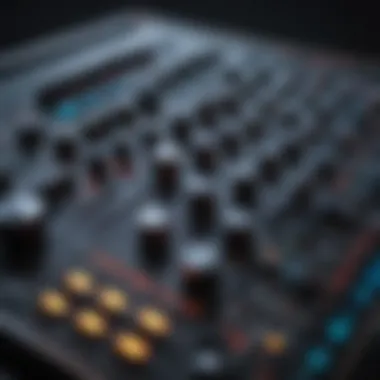
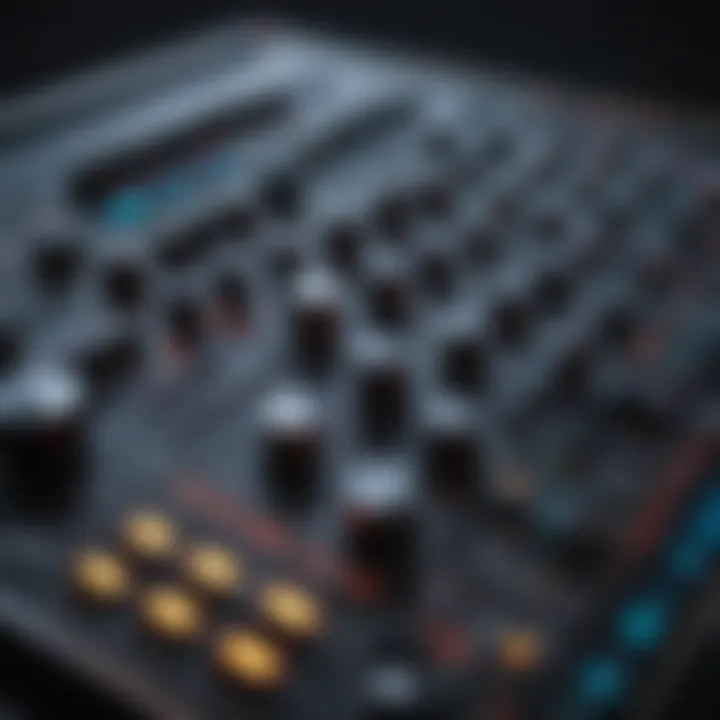
Digital Audio Workstations
Digital Audio Workstations, commonly referred to as DAWs, stand at the forefront of music creation. These software platforms provide musicians with the essential tools to record, edit, and produce audio. A key characteristic of DAWs is their versatility. They cater to various genres and styles, allowing artists to experiment freely within a welcoming interface. Popular DAWs like Ableton Live and Pro Tools are incredibly beneficial as they offer extensive features, from MIDI sequencing to sophisticated effects processing.
One unique feature of DAWs is their ability to integrate a range of plugins, enabling users to customize their sound and workflow. However, the extensive capabilities can lead to a steep learning curve for beginners, which might feel overwhelming.
Music Notation Software
When it comes to composing and arranging music, Music Notation Software plays a pivotal role. This type of techno tool is invaluable for those who wish to create sheet music or orchestrate complex compositions. The standout characteristic of such software is its visual representation of music, making it easy to understand musical structure. Programs like Finale and Sibelius are popular choices among composers as they streamline the process of transforming musical ideas into notated form.
A key distinctive feature is the playback functionality, allowing users to hear their compositions as they write, thus enhancing the creative process. Nevertheless, while these tools are powerful, they may not always accommodate experimental compositions that stray from traditional notation conventions.
Audio Editing Tools
Audio Editing Tools are essential in the post-production phase of music creation. They allow users to manipulate sound clips with precision, enhancing the overall quality of recordings. A significant feature of these tools, like Audacity and Adobe Audition, is their capability to offer detailed editing options that support various audio formats. This is particularly beneficial for music enthusiasts striving to polish their tracks before distribution.
What sets audio editing tools apart is their capacity to implement effects such as equalization, compression, and noise reduction, contributing to professional-grade sound. However, the complexity of some software can be daunting for those stepping into the editing arena for the first time.
Hardware Instruments
Synthesizers
Synthesizers bring a tactile approach to music creation, allowing musicians to craft unique sounds. The appeal of synthesizers lies in their ability to generate a broad spectrum of tones and timbres. Classic synthesizers like Moog Minimoog are often favored for their rich analog sound. Their key characteristic is the capacity to modulate parameters, thus offering limitless sound design possibilities.
A unique aspect of synths is their capability for real-time experimentation, which encourages spontaneous creativity. On the downside, the learning process can be intricate due to the plethora of knobs and controls, potentially intimidating newcomers.
Samplers
Samplers have redefined the way music is created. These devices record, store, and playback audio samples, giving musicians the ability to manipulate and layer different sounds. The vital component of a sampler is its flexibility; artists can slice, stretch, and reorder samples to produce distinct results. Devices like the Akai MPC series have gained enormous popularity for their user-friendly interface and powerful sampling capabilities.
A defining detail is the ability to utilize outside sounds, opening a floodgate of creative options. Nonetheless, the reliance on pre-recorded audio can sometimes stifle original sound development.
Drum Machines
Drum machines add rhythmic depth to musical compositions and are vital in both studio settings and live performances. Their key characteristic is the ability to replicate traditional drum sounds accurately or produce electronic beats. Renowned models like Roland TR-808 have cemented their worth across genres, from hip hop to electronic dance music.
A unique benefit of drum machines is their programmability, allowing users to create intricate patterns and loops. However, a possible drawback is the limited expression compared to live drumming, which can feel somewhat mechanical.
Emerging Technologies
AI and Music Composition
AI technology is making waves in the realm of music composition. By analyzing vast libraries of music, AI tools can help generate new compositions or provide suggestions, fostering new ideas. The most notable feature of AI in music is its capacity to learn preferences and offer tailored outcomes, making it a popular choice among modern composers.
What’s more interesting is AI’s ability to provide a framework for creative collaboration, pushing boundaries. However, there are ongoing debates regarding the essence of human creativity in works generated by machines, which raises questions about artistic authenticity.
Virtual Reality Concerts
The advent of Virtual Reality concerts has introduced a transformative experience for music lovers. These platforms offer an immersive experience that transports attendees into a different world, letting them connect with their favorite artists in ways traditional concerts can’t. The defining characteristic is their ability to break down geographical barriers, allowing fans from all over the globe to participate.
The uniqueness of VR concerts lies in their interactivity, enabling audiences to explore different aspects of performances. However, challenges such as technology access and the potential for disconnection from the real-life concert atmosphere can be limiting factors.
Blockchain in Music Ownership
Blockchain technology is reshaping the landscape of music ownership and distribution. Its core feature is transparency, allowing artists to directly control their content and royalties without intermediaries. This is particularly appealing for emerging artists looking to navigate the complexities of the industry.
One unique aspect of blockchain is its potential to provide a more equitable model for music licensing. Yet, the technology is still relatively new, leading to concerns about scalability and understanding among artists and consumers alike.
The Impact of Techno Tools on Music Creation
Techno tools have dramatically reshaped how music is created, offering musicians and hobbyists a variety of resources to explore their creativity. These tools not only provide new sounds but also introduce workflows that can enhance productivity and foster collaboration. Understanding the impact of techno tools on music creation is crucial, particularly in a world where artists are continually looking to innovate and connect with their audience.
Enhancing Creativity
Access to a Wide Range of Sounds
Access to a rich library of sounds is a game changer for many musicians. It gives them the freedom to experiment and create unique compositions without the constraints of traditional instruments. Instead of being limited to a few sound options, artists can tap into thousands of samples, loops, and synth presets with just a click.
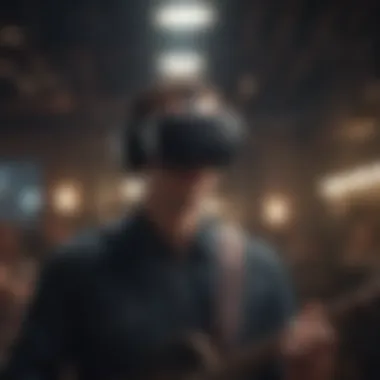
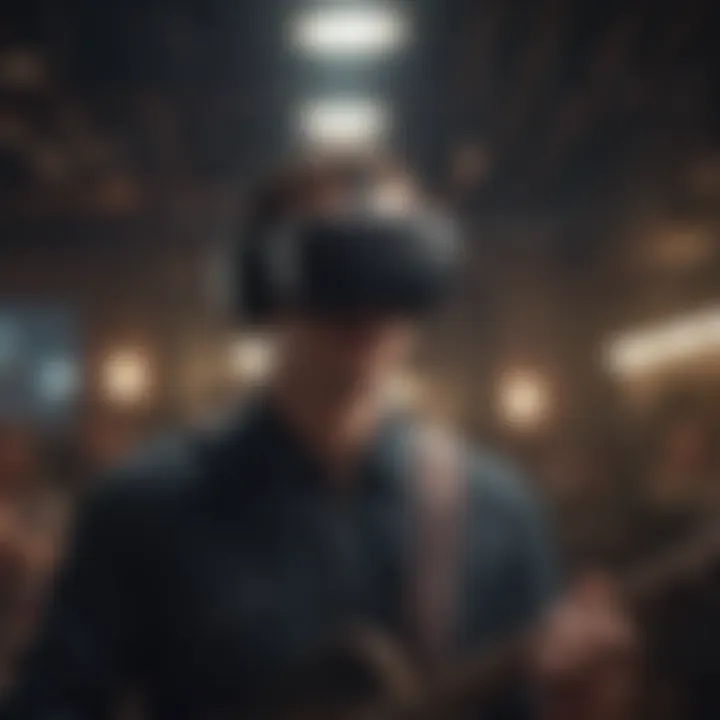
For instance, software like Ableton Live and FL Studio offers built-in sound packs that span multiple genres. This allows an aspiring artist trying out house music to seamlessly integrate classical piano sounds alongside vibrant synths, creating an eclectic mix that stands out.
The key characteristic of this vast sound library is its democratization of music production. Musicians no longer need a huge studio or expensive gear to access quality sounds.
However, the downside might be overwhelming choices. With so many options, beginners can feel lost, not knowing where to start or how to effectively combine sounds. Finding a balance is key.
Flexible Editing Options
The flexibility offered by modern editing tools is a tremendous boon to music creation. Unlike in the past, where changing a note meant re-recording an entire section, today's editing capabilities allow artists to manipulate their music with ease. This is evident in programs like Pro Tools and Logic Pro X, which provide features that enable precise adjustments to pitch, timing, and even instrument tuning.
This ease of making adjustments encourages experimentation. Artists can play around with arrangements and quickly find what sounds best without significant time investment. The nonlinear editing workflow means that it’s no longer a case of "one take, one option"; instead, it’s all about testing the waters until the desired sound is achieved.
Still, the power that comes with these flexible options can lead to another problem: over-editing. Sometimes, in the pursuit of perfection, artists cannot recognize when to stop tweaking the track, making it lose its natural feel. Keeping that in mind can help maintain authenticity in their music.
Collaborative Music Making
Online Collaboration Platforms
The rise of online collaboration platforms has changed how musicians work together. Tools like Splice and Soundtrap allow artists to connect and share projects, even if they are continents apart. This global accessibility opens countless doors for creative partnerships, bringing diverse influences into a single piece of work.
With these platforms focusing on ease of use, artists can easily upload their work, invite collaborators, and bounce ideas back and forth in real time. This characteristic of accessibility has made teamwork not just feasible but also enjoyable.
However, collaborating online also presents challenges like the dependence on internet connectivity or the risk of miscommunication that can arise from not being face-to-face. Each artist’s individual style might clash, and finding a common ground can sometimes be a task in itself. Nevertheless, the benefits outweigh these concerns as artists learn and grow from the shared experience.
Remote Recording Techniques
Remote recording techniques are on the rise and provide another way for musicians to innovate in their processes. Technologies like Zoom and specialized software enable artists to sync up virtually, allowing them to record parts for a track no matter where they are located. This approach has made it possible for musicians to include high-profile guest features without the expensive travel costs.
A key aspect of remote recording is its capability to facilitate quick sessions without the need for studio time, thus making it an attractive option for many. It allows artists to work flexibly, fitting recording times into their schedules rather than having to align their time around studio availability.
The trade-off here might include potential latency issues or the possible loss of sound quality, given the dependence on internet connections. However, many artists have adapted, using specific software designed to minimize these drawbacks. Remote recording techniques are reshaping how musicians collaborate, making music creation more versatile than ever.
Techno Tools in Music Production
In the contemporary music landscape, the significance of techno tools in production can't be ignored. These tools not only facilitate creativity but also reshape how music is made and enjoyed. Various software and hardware innovations streamline workflows, enhance the overall sound quality, and offer musicians a range of possibilities that were once confined to professional studios.
The crux of this section is to analyze how these tools simplify the production process and enhance audio quality. We'll delve into the importance of specific production tools and how they play a pivotal role in an artist's journey.
Streamlining the Production Process
Mixing and Mastering Tools
Mixing and mastering tools are the backbone of sound refinement. This stage in production is where individual tracks are balanced, effects are applied, and the final touch-ups happen. A hallmark of these tools is their ability to provide a nuanced palette for sound shaping. For instance, tools like iZotope Ozone or Waves plugins allow for extensive equalization and dynamic range adjustment, leading to professional-sounding tracks without necessarily stepping foot in a high-end studio.
A particularly appealing feature of these tools is real-time audio processing. This means an artist can hear changes as they make them, which can significantly influence their creative decisions. However, there can be a downside; the plethora of options sometimes leads to decision paralysis, where artists might spend hours tweaking the minutiae rather than working on new material.
Project Management Software
When multiple collaborators are involved, project management software becomes crucial. Such tools, like Trello or Asana, help streamline communication and organization, ensuring everyone is on the same page. The key characteristic here is task assignment, which allows team members to take ownership of their parts, enhancing accountability.
A unique attribute of project management software is its integration with other tools, like Google Drive or Dropbox, providing a seamless workflow. Yet, the challenge lies in ensuring all team members are tech-savvy enough to utilize these solutions effectively. If some members aren’t familiar, it can lead to miscommunication and delays.
Quality Assurance and Auditory Enhancement
Plugins and Effects
Plugins and effects are essential for adding depth and character to a track. These digital extras can simulate everything from reverberation to unique guitar tones, creating an auditory experience that captivates listeners. One standout option is Valhalla Room, known for its natural, lush reverb.
They offer essential flexibility, allowing tweaks that might transform a decent track into a hit. However, over-reliance on plugins can sometimes mask fundamental issues in the recording itself, leading to a less authentic sound.
Sound Design Techniques
Exploring sound design techniques unleashes artistic expression. From synthesizing sounds to manipulating samples, these techniques allow producers to create something entirely new. Tools like Serum or Ableton Live's synth layer equip musicians with options to craft distinctive soundscapes that set their work apart.
Their key characteristic is the ability to layer sounds, which enhances complexity without overwhelming the listener. Yet a potential drawback is the sheer number of choices available, which can be overwhelming, especially for novices. It's crucial for creators not to lose their way in this sea of possibilities and remember their initial vision.
"The tools are only as effective as the vision of the artist using them."
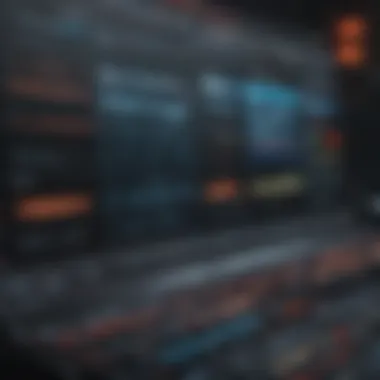
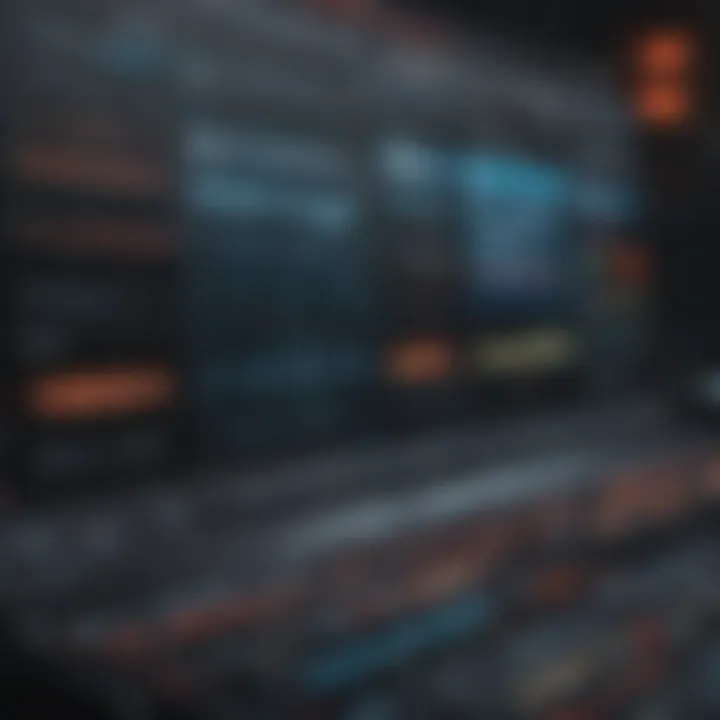
Technology’s Role in Music Distribution
The significance of technology in music distribution stands as a pivotal theme in our exploration of techno tools. Distributing music in today’s landscape has evolved far beyond the traditional channels of radio and physical album sales. With an explosion of digital platforms and social media, artists now have the tools to reach global audiences directly, bypassing the often-complex pathways of record labels and distribution companies. This not only democratizes access to music but also creates new landscapes for artistic expression.
Digital Platforms and Streaming Services
In the realm of music distribution, digital platforms and streaming services have completely transformed how music is consumed. Services like Spotify, Apple Music, and YouTube have become the go-to channels for listeners. They enable users to access vast libraries of music on-demand, all from the comfort of their own devices. The benefits of these platforms are multi-faceted:
- Accessibility: Artists can upload their music to these platforms, making it available to anyone with an internet connection.
- Monetization: These services offer various revenue models for artists, such as streams, downloads, and subscriptions.
- Data Analytics: Artists can track listener statistics through these platforms, allowing them to understand their audience better and tailor their marketing to fit.
However, this shift is not without its challenges. Issues such as fair compensation and data privacy have surfaced and require careful consideration. Many artists feel that the revenues from streaming do not adequately reflect their work's value, prompting discussions on the need for reform in how artists are compensated.
Social Media and Music Promotion
Social media has become another cornerstone in music distribution, allowing artists to build their brand and engage fans in real-time. Platforms like Facebook, Instagram, and Twitter offer unique opportunities for promotion, enabling artists to connect directly with audiences. Here are some key aspects:
- Fan Engagement: Artists can share behind-the-scenes content, updates, and even live performances, fostering deeper connections with fans.
- Viral Marketing: A catchy song or music video can go viral, propelling an artist into the spotlight with minimal financial investment.
- Cost-Effective Promotion: Traditionally, advertising for music often required hefty budgets. Now, artists can promote their work through organic posts and interactions, DIY-style.
Artists should build a strategy that leverages social media effectively, engaging with their audience while avoiding the pitfalls of over-commercialization. Finding the right balance can turn casual listeners into loyal fans.
"In today's world, social media isn't just a promotional tool; it's a lifeline for artists connecting with their audience."
The Future of Techno Tools in Music
As we peer into the horizon of the music industry, the role of technology becomes increasingly pivotal. The future of techno tools in music is not just about the gadgets and software we use, but also about changing the landscape of music itself. It shapes how artists create, how audiences consume, and how industries operate. The advancements in technology promise a metamorphosis of the musical experience, creating vast opportunities and challenges alike for musicians and fans.
The integration of AI, virtual reality, and blockchain technology suggests a future where creativity flourishes in unexpected ways. Techno tools, such as intelligent software applications and cutting-edge equipment, enhance a musician’s ability to produce and distribute their work more efficiently than ever before. Furthermore, these tools often democratize the music-making process, allowing a broader range of voices to be heard.
Predicted Trends in Technology
Adoption of Artificial Intelligence is predicted to spearhead many changes in music creation. AI-powered composition tools will likely evolve, enabling musicians to collaborate with intelligent systems that can generate melodies or harmonies based on input data. This advancement doesn't just accelerate the creative process; it opens doors to exploring genre-blending compositions.
Another trend is the rise of immersive technologies. Virtual reality concerts could redefine live music experiences, allowing fans to attend performances from the comfort of their homes while experiencing visually stunning environments. Moreover, the incorporation of augmented reality elements into performances may enhance engagement by adding layers of interactivity.
In addition, we should keep an eagle eye on blockchain technology. This decentralized approach may revolutionize music ownership and distribution, ensuring that artists retain more control over their work. It also offers transparent tracking of royalties, which could lead to fairer compensation for creators.
Challenges and Ethical Considerations
With these advancements come numerous challenges and ethical considerations that require careful thought.
Data Privacy Concerns
Data privacy remains at the forefront when we evaluate the implications of using tech in music. The collection of user data by streaming platforms and software applications raises questions about how securely that information is managed. Musicians and users alike need to be alerted to the potential risks of data exploitation.
One of the key characteristics of this concern is that reliance on personal data can inadvertently expose artists and listeners to breaches that not only violate privacy but may harm reputations. Addressing these concerns is a necessary step for ensuring confidence in technological integration in music creation and distribution. It's something that warrants ongoing discussions as we advance further into tech-dependent environments.
Maintaining Artistic Integrity
Balancing innovation with artistic expression is imperative in a rapidly evolving landscape. Maintaining artistic integrity is a prominent concern when technology sways the scales of creativity. Some argue that over-reliance on automation may dilute genuine artistic expression, as composers and musicians might lean on software to make creative decisions.
The unique feature of this challenge lies in the intersection of creativity and technology. While tools can enhance a musician's capability, they might inadvertently create a homogenized sound where originality is overshadowed by algorithms. This is a push-and-pull that artists must navigate carefully to stay true to their vision while embracing the tools available to them.
In summary, while the future looks promising for techno tools in music, it's essential to strike a balance by considering both the incredible benefits and potential pitfalls. As we advance, ongoing conversations about privacy, integrity, and innovation will shape the way forward.
End
In this ever-evolving landscape of music technology, understanding how to effectively utilize techno tools is paramount for aspiring musicians and music enthusiasts alike. This article serves as a thorough examination of the various tools that have not only enhanced music creation but also reshaped the industry itself.
Summary of Key Points
Before we close our discussion, let's take a moment to recap the pivotal aspects we’ve explored:
- Defining Techno Tools: We established that techno tools encompass both software and hardware, from user-friendly applications to intricate instruments, each serving specific purposes in music production.
- Types of Techno Tools: A broad array of tools is available, including software applications like Digital Audio Workstations (DAWs), alongside hardware instruments such as synthesizers and drum machines. Emerging technologies like AI composition also reveal what the future might hold.
- Impact on Music Creation: We examined how these tools enhance creativity, allowing musicians to manipulate sound and experiment freely. The aspect of collaboration, made possible through online platforms, highlights how interconnected today’s music scene is.
- Music Production: Techno tools have streamlined the production process, with an emphasis on tools for mixing and mastering as well as project management software that keep workflow efficient.
- Distribution and Promotion: The rise of digital platforms and the powerful role of social media enables musicians to share their work far and wide, altering traditional avenues of music distribution.
- Future Trends: We discussed anticipated trends and considerations regarding data privacy, urging musicians to find a balance between embracing new technologies and maintaining their artistic integrity.
Final Thoughts on Techno Tools
As we draw to a close, it's clear that the significance of techno tools extends beyond mere convenience—they are essential for anyone serious about music in today’s world. Whether you’re creating your first track or refining your sound for a larger audience, these tools provide the resources necessary to push the boundaries of musical expression.
Investing time to learn these technologies is not just beneficial; it’s imperative. From the aspiring musician to the seasoned pro, there lies a wealth of opportunity to explore how techno tools can elevate your music-making experience.
"Music is the shorthand of emotion." - Leo Tolstoy
The future is bright for those willing to embrace the techno tools available. As we look ahead, it’s worth remembering that while technology continues to advance, the heart of music—its ability to connect, express, and inspire—remains unchanged.







